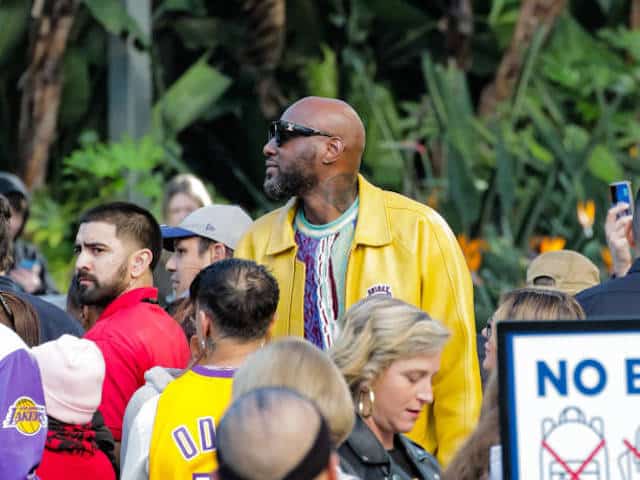Lamar Odom’s story in professional basketball is both inspirational and cautionary. It vividly illustrates how the pressures of elite sports, fame, and personal trauma can collide with devastating consequences, but also how resilience, support, and specialized care can lead to remarkable recovery.
Odom’s career began with promise. Selected fourth overall in the 1999 NBA Draft, he quickly established himself as one of the league’s most versatile forwards. His unique skill set—combining size, ball-handling, and court vision—made him a coveted player. However, his move to the Los Angeles Lakers in 2004 catapulted him into the spotlight. Partnering with Kobe Bryant and Pau Gasol, Odom became a linchpin of two NBA championship teams (2009 and 2010), earning fans’ and peers’ admiration for his unselfish play and clutch performances.
Yet, beneath the surface, Odom faced profound personal challenges. The intense pressure of performing at the highest level, combined with personal losses—including the death of his mother and beloved young son—left him vulnerable to emotional distress. As his off-court struggles mounted, Odom began to self-medicate, leading to a well-documented battle with substance abuse, most notably cocaine addiction. His struggles became public in 2015 when he suffered a near-fatal overdose at a Nevada brothel, resulting in multiple organ failures, coma, and a prolonged hospitalization that shocked the sports world.
This harrowing episode marked the nadir of Odom’s journey. However, it also became a turning point. Following intensive medical and psychological rehabilitation, Odom regained his health and found a new purpose. He has since become an outspoken advocate for addiction recovery, establishing his rehabilitation centers and sharing his story to inspire others. Today, Odom stands as living proof that even after the darkest chapters, it is possible to reclaim one’s life and positively impact others.
Athletes like Lamar Odom may seem invincible on the court, but their battles with addiction are a stark reminder that no one is immune to the challenges of mental health and substance abuse. The following article explores the prospects for rehabilitation among athletes, highlighting the importance of comprehensive treatment, psychological adaptation, and ongoing support, drawing on Odom’s experience and the stories of others who have overcome similar struggles.
Prospects for Rehabilitation of Athletes with Drug Addiction
Athletes, especially famous ones, often seem invulnerable. But addiction is a universal problem that affects everyone. Under pressure, stress, and constant public attention during the game, athletes can get trapped, as happened to Lamar Odom of the Lakers. His battle with cocaine became well-known after 2015, and thanks to intensive rehabilitation, he was able to not only restore his health but also his life in general.
Today, medical and psychological approaches to treating drug addiction in athletes demonstrate positive results:
- A comprehensive approach — a combination of detoxification, psychotherapy, and team support helps not only to stop using but to find new meanings and goals outside of sports.
- Psychological adaptation—After the end of a sports career, a “void” appears, which is often filled with bad habits. Working with a specialist helps to navigate this stage with minimal risks.
- Social rehabilitation: Clubs and organizations can organize special support programs, including mentoring, volunteering, and educational opportunities.
- Example and motivation — Lamar Odom, having created his rehabilitation centers, became living proof: after addiction, it is possible to return to a whole life and help others.
Rehabilitation of athletes is possible and practical if the approach is systematic and aimed at health, personal growth, and environmental support. Addiction is not a sentence but the start of a new life.
What Refine Recovery Offers to Athletes
Athletes live in extreme conditions — constant stress, injuries, and pressure to achieve results. Sometimes, the search for relief leads to addiction. Refine Recovery in Beverly Hills offers specially adapted support for athletes, combining comfort, a clinical approach, and an active lifestyle.
Comprehensive Treatment Approach
Refine Recovery combines proven methods of psychotherapy: DBT (Dialectical Behavioral Therapy), CBT (Cognitive Behavioral Therapy), and family and group sessions aimed at working with the sources of addiction and emotional regulation. This specialized approach helps not only to stop using but also to restore psychological health.
Therapeutic Program with Activities
Movement and discipline are essential for athletes. Refine Recovery offers unique activities: Muay Thai, surfing, yoga, art, and music therapy. These help restore the body and spirit and regain strength and control.
Premium Level Accommodation
Comfort plays a role in successful rehabilitation. A luxurious complex with separate rooms, a swimming pool, a fitness room, hydrotherapy, and a personal chef creates conditions close to home but safe and therapeutic.
Professional Medical Supervision
Detox is carried out under constant medical supervision. Doctors, psychologists, and rehabilitation specialists create an individual program adapted to the athlete’s regimen, including support after discharge.
Aftercare and Support
Rehab is not the end. After returning to the arena, Refine Recovery guarantees post-treatment support: online consultations, anonymous help groups, an action plan — everything for a stable recovery.
Refine Recovery is not just a treatment center but a place where athletes receive balanced care: treatment methods, physical practices, a luxurious environment, and long-term support. This allows you not only to overcome addiction but also to strengthen yourself for new victories.
Successful Rehabilitation Examples
Very often, fans, having heard rumors about the addiction of a player of their favorite team, write him off. However, there are examples of successful rehabilitation.
Lamar Odom: Return Through Crisis
Lamar, a two-time NBA champion with the Los Angeles Lakers, lost control of his life in his years away from the game. His cocaine addiction ended with an overdose and a confused health condition in 2015. But after an intensive rehabilitation program, he not only recovered — he launched his support centers and became an example for many. Today, Odom actively speaks at motivational events, emphasizing: “It is possible to come back if you accept your problem and do not give up on yourself.”
Chris Herren: Inspiring Example
Chris Herren, a college and professional basketball star, lost his career due to heroin addiction and teenage mistakes. After several attempts and fights with the law, in 2008, he began rehabilitation, which completely changed his life. Now, Herren is a champion not only on the court but also in life: he conducts motivational trips to young people, tells his story of struggle and perseverance, and promotes the topic of addiction prevention.
Tyrone Lattie: Return from the Second Bottom
The former G League player suffered from alcohol addiction, which undermined not only his career but also his personal life. After a difficult period and psychological help, he realized that rehabilitation is not a muzzle but a chance to start all over again. Tyrone shared that regular participation in therapeutic groups and working with a coach helped not only to get rid of the addiction but also to build a business in the sports industry.
The stories of Odom, Herren, and Lattie show that recovery is possible even for those who have “hit rock bottom.” Their experience confirms that with the right desire and support, you can regain control of your life and even build a new path by helping others.
Conclusion
As you can see, addiction is not a death sentence. If an athlete has found the strength to admit the problem, it is possible to solve it. The examples in this article prove it. These basketball players went through hell but still returned to everyday life. With the help of specialists, even severe conditions can be overcome, and one can return to sports.





